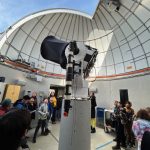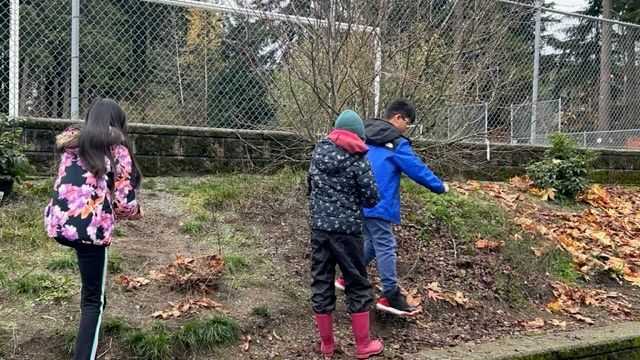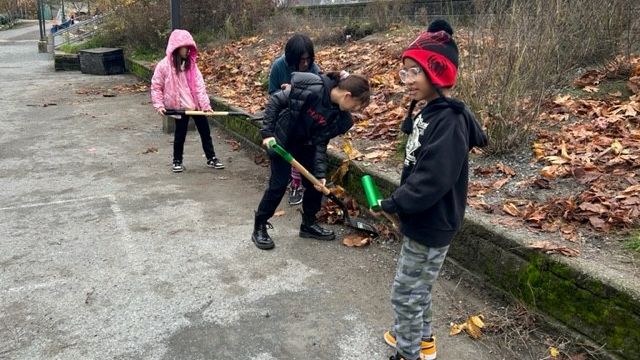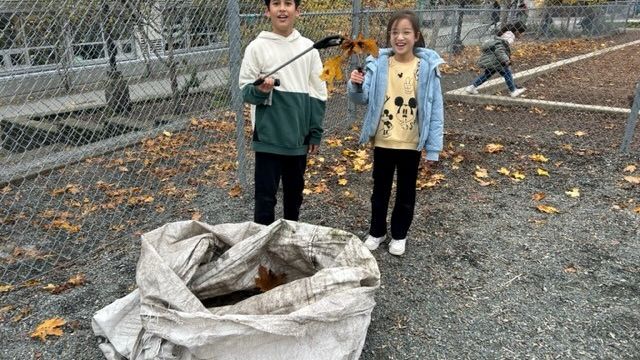 Sine the beginning of the year, Division 5 has been working on their Speed Stacking skills. It is a relatively new sport that is based on… that’s right… stacking cups!
Sine the beginning of the year, Division 5 has been working on their Speed Stacking skills. It is a relatively new sport that is based on… that’s right… stacking cups!
Sport stacking, also known as cup stacking or speed stacking, is an individual and team sport that involves stacking 9 or 12 (usually 12) specially designed cups in pre-determined sequences as fast as possible. The cups are specially designed to allow for speedier times, so the sport doesn’t work so well with regular cups. People of all ages and from all over the world compete in sport stacking.
 Just as with any sport, there are particular rules that guide speed stacking. Division 5 has been learning these rules, and developing their muscle memory by learning the Competition Cycle (3-6-3, 6-6, 1-10-1). One of the rules of cup stacking is that the player must use alternating hands in order to set up each cycle of cups–this action of alternating hands actually strengthen the right and left brain connection. There are also competition events such as partner stacking where each person performs the actions of either the right or the left hand.
Just as with any sport, there are particular rules that guide speed stacking. Division 5 has been learning these rules, and developing their muscle memory by learning the Competition Cycle (3-6-3, 6-6, 1-10-1). One of the rules of cup stacking is that the player must use alternating hands in order to set up each cycle of cups–this action of alternating hands actually strengthen the right and left brain connection. There are also competition events such as partner stacking where each person performs the actions of either the right or the left hand.
 Division 5 has been focused on learning the cycle carefully to avoid fumbles and falls. Once students are familiar and fluent with the cycle, they will be developing their speed! It’s important to start with the fundamentals of a sport before adding in speed and power.
Division 5 has been focused on learning the cycle carefully to avoid fumbles and falls. Once students are familiar and fluent with the cycle, they will be developing their speed! It’s important to start with the fundamentals of a sport before adding in speed and power.
If you want to learn more, check out these official speed stacking YouTube videos.








 The first model text is called The Important Book by Margaret Wise Brown. Each item in The Important Book is broken down to its essence–telling the reader all the most important things about that object. The author uses a lot of sensory detail when explaining, telling us what the thing sounds like, looks like, tastes like, etc.
The first model text is called The Important Book by Margaret Wise Brown. Each item in The Important Book is broken down to its essence–telling the reader all the most important things about that object. The author uses a lot of sensory detail when explaining, telling us what the thing sounds like, looks like, tastes like, etc.

























 Sine the beginning of the year, Division 5 has been working on their Speed Stacking skills. It is a relatively new sport that is based on… that’s right… stacking cups!
Sine the beginning of the year, Division 5 has been working on their Speed Stacking skills. It is a relatively new sport that is based on… that’s right… stacking cups! Just as with any sport, there are particular rules that guide speed stacking. Division 5 has been learning these rules, and developing their muscle memory by learning the Competition Cycle (3-6-3, 6-6, 1-10-1). One of the rules of cup stacking is that the player must use alternating hands in order to set up each cycle of cups–this action of alternating hands actually strengthen the right and left brain connection. There are also competition events such as partner stacking where each person performs the actions of either the right or the left hand.
Just as with any sport, there are particular rules that guide speed stacking. Division 5 has been learning these rules, and developing their muscle memory by learning the Competition Cycle (3-6-3, 6-6, 1-10-1). One of the rules of cup stacking is that the player must use alternating hands in order to set up each cycle of cups–this action of alternating hands actually strengthen the right and left brain connection. There are also competition events such as partner stacking where each person performs the actions of either the right or the left hand. Division 5 has been focused on learning the cycle carefully to avoid fumbles and falls. Once students are familiar and fluent with the cycle, they will be developing their speed! It’s important to start with the fundamentals of a sport before adding in speed and power.
Division 5 has been focused on learning the cycle carefully to avoid fumbles and falls. Once students are familiar and fluent with the cycle, they will be developing their speed! It’s important to start with the fundamentals of a sport before adding in speed and power.
